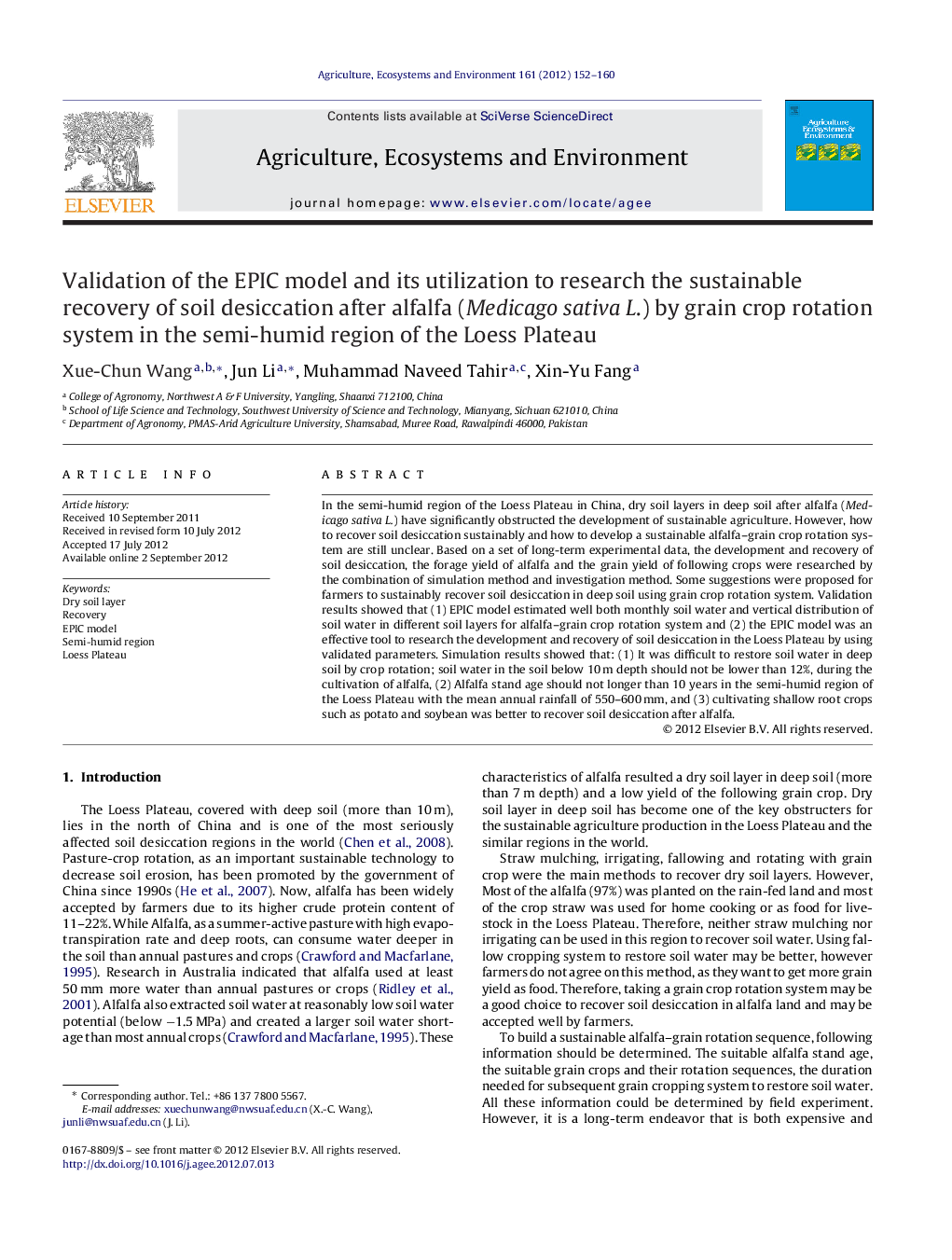| Article ID | Journal | Published Year | Pages | File Type |
|---|---|---|---|---|
| 2414414 | Agriculture, Ecosystems & Environment | 2012 | 9 Pages |
In the semi-humid region of the Loess Plateau in China, dry soil layers in deep soil after alfalfa (Medicago sativa L.) have significantly obstructed the development of sustainable agriculture. However, how to recover soil desiccation sustainably and how to develop a sustainable alfalfa–grain crop rotation system are still unclear. Based on a set of long-term experimental data, the development and recovery of soil desiccation, the forage yield of alfalfa and the grain yield of following crops were researched by the combination of simulation method and investigation method. Some suggestions were proposed for farmers to sustainably recover soil desiccation in deep soil using grain crop rotation system. Validation results showed that (1) EPIC model estimated well both monthly soil water and vertical distribution of soil water in different soil layers for alfalfa–grain crop rotation system and (2) the EPIC model was an effective tool to research the development and recovery of soil desiccation in the Loess Plateau by using validated parameters. Simulation results showed that: (1) It was difficult to restore soil water in deep soil by crop rotation; soil water in the soil below 10 m depth should not be lower than 12%, during the cultivation of alfalfa, (2) Alfalfa stand age should not longer than 10 years in the semi-humid region of the Loess Plateau with the mean annual rainfall of 550–600 mm, and (3) cultivating shallow root crops such as potato and soybean was better to recover soil desiccation after alfalfa.
► EPIC model is an effective tool to research soil desiccation. ► Dry soil layer in 10 m depth was difficult to recover. ► Shallow root crops were better to recover soil desiccation after alfalfa.
